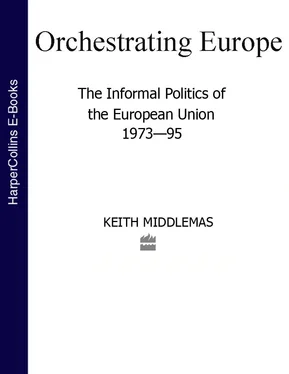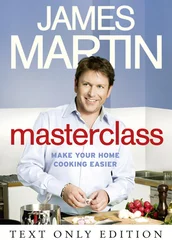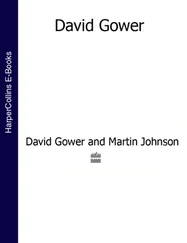After the War almost every country witnessed the creation of national ‘European’ movements, even though they often disagreed on both aims and tactics. Some dedicated themselves to the task of leading opinion, while others had more populist aspirations. Some saw progress as incremental, like a ripple effect from a core of commitment; others wanted a swift adoption of new political structures; some took a view that it was good for others but not necessarily for themselves. Various national federalist groups, more geared towards mobilizing mass opinion and characterized in their approach by a certain ‘constitutionalism’, formed the European Union of Federalists in 1946. Another organization formed at this time, intent on mobilizing support for a new form of European political organisation, was the Socialist Movement for a United States of Europe. However, the lead in galvanizing public opinion was the United Europe Movement, inspired by Winston Churchill’s Zürich speech in September 1946, calling for a United States of Europe, and founded by his son-in-law, Duncan Sandys. It was this body that, in May 1948, sponsored the Congress of the European Movement, held in the Hague. 12
The Hague Congress, which created the Council of Europe, was supposed to create a new momentum towards higher federalist goals. Instead, its creation was its own greatest achievement. Whether the British government, or Churchill in opposition, had ever held more than a fleeting interest in actively associating themselves with the construction of a European federation is highly questionable. Embroiled in an organization with a federation as its goal, the government rapidly proceeded to distance itself from other countries’ impulses towards ‘integration’, and in the process became the focus of opposition. The Council of Europe became tom between the ‘federalists’, who wanted to move quickly towards new constitutional arrangements, and the ‘functionalists’, who believed that new arrangements would be workable only if the surrender of sovereignty were a functional necessity. The latter envisaged that progress would take place cautiously, on a step-by-step basis, but since the UK was the leading exponent of the functionalist school, the position boiled down to one of no progress at all.
These developments quickly paralysed developments in the Council of Europe and certainly robbed the European movement, in its various guises, of direct political influence. Only in Italy, under the leadership of Altiero Spinelli, was there an attempt to convert the federalist cause into a mass movement, the Movimento Federalista Europeo. Spinelli soon became disenchanted with the MFE, but his enthusiasm for supranationalism remained undiminished. When the head of the Italian government, Alcide de Gasperi, asked him to draft a federalist plan for controlling European institutions, Spinelli seized the chance. His efforts resulted in the introduction of the ‘federalist’ clause 38 into the European Defence Community treaty (see below). This, however, represented the pinnacle of the MFE’s achievements. As the EDC faded, so the movement’s influence began to ebb. 13
Whilst popular movements cannot claim credit for initiating ‘the process of integration’, they nonetheless provided a pool of new ideas and a vocabulary that decision makers could draw upon when confronted by immediate political problems. This occurred most dramatically when, in May 1950, the French foreign minister, Robert Schuman, announced his plan to form a coal and steel pool which embraced Germany. When this call was answered by the Benelux countries and Italy as well, the way was cleared for the ‘Six’ to embark upon a series of institutional experiments built around the concepts of supranationality and surrender of sovereignty.
It was by no means preordained that six countries would become irrevocably associated with each other in a series of supranational communities, nor that those six would be France, Germany, Italy, the Netherlands, Belgium and Luxembourg. To appreciate how ‘the Six’ reached that stage, we have to go back to the creation of Benelux, and the reaction of France, especially, to that development.
Benelux was the oldest of the post-War experiments in regional integration in western Europe. It linked Belgium and Luxembourg (whose own economic union, the BLEU, dated back to 1921) to the Netherlands, first through a monetary agreement concluded in 1943, and then by a customs union treaty signed a year later by the three governments-in-exile in London. Before the War the BLEU and the Netherlands had conducted approximately 10% of their trade with each other, although there had increasingly been an imbalance in favour of the former. The greater wartime damage in the Netherlands served to accentuate the Dutch deficit, which doubled between 1947 and 1951. Despite the manifold difficulties, the customs union came into force in January 1948, when all tariffs were abolished to be replaced by a common external tariff. However, trade was still impeded by the widespread imposition of quotas, especially on the side of the Dutch. To remove these, even if only towards the BLEU, threatened to aggravate the deficit. Progress was only made possible by two further measures. Firstly, Belgium granted ever greater credit extensions (which it was willing to do if it meant securing the Dutch market from Germany, while the latter’s industry was still operating at artificially low levels) and eventually the problem was subsumed into the European Payments Union. Secondly, the Dutch were able to secure preferential access to the Belgian agricultural market. They had wanted completely free access, since this would have helped remedy their trade deficit, but they had to make do with a provision which left Belgium’s domestic protectionism intact. 14
From its inception, the Benelux experiment attracted considerable attention from policy-makers in France. This should be no surprise since before the War Belgium had been France’s largest European trading partner. Just as Belgium hoped to supplant Germany in Dutch markets, so France to needed to expand into the German vacuum to fund its own modernization plans. However, whereas the Benelux tariffs lay close to each other at the lower end of the range when they agreed to a common external tariff, it was realized that any union with France would be behind highly protectionist walls. Moreover, the Netherlands required the German market for its agrarian exports and its traditional shipping services. This required a reciprocal ability to purchase German imports; something that would be impossible if the Netherlands agreed to the arrangements proposed by the French.
From 1944 onwards there was continuous French pressure to break open the Benelux. It was headed off by the creation of a joint consultative body, known as the Conseil Tripartite, which arranged swaps of raw materials in the early post-War months, attempted to co-ordinate policy towards Germany (difficult given the different national provisions) and provided a forum for French attempts for a customs union. These efforts to break open the Benelux were countered by a demand that the move could only be considered if West Germany were to be included; a demand that ran counter to the reason for the French wanting the union in the first place. In 1947 the French used the CEEC conference in Paris to bluff the Benelux partners into daring to turn down the option of a customs union. They had hoped to use American leverage, who themselves wanted to use dollar aid as a way of securing their goal of closer regional integration.
Instead the study group for a pan-European customs union was created to deflect some of the pressure. They deliberated until the end of 1948 but ultimately failed because no decision had yet been taken on the German economy and its position in any future schemes. More immediately, the French found their challenge to move to the immediate formation of a customs union accepted only by the Italians. The fact that France’s primary goal remained the Benelux was reflected in two further approaches in 1948 to persuade them to join. Both were refused. 15
Читать дальше









![Brian Thompson - A Monkey Among Crocodiles - The Life, Loves and Lawsuits of Mrs Georgina Weldon – a disastrous Victorian [Text only]](/books/704922/brian-thompson-a-monkey-among-crocodiles-the-life-thumb.webp)


